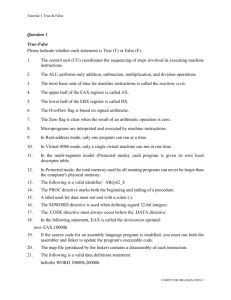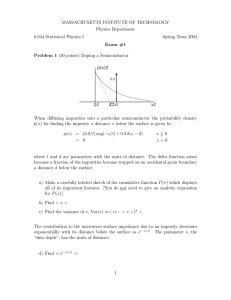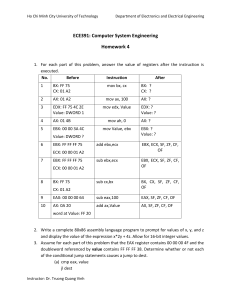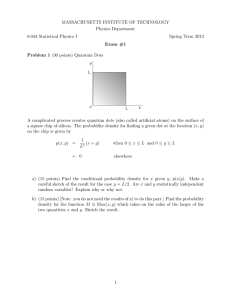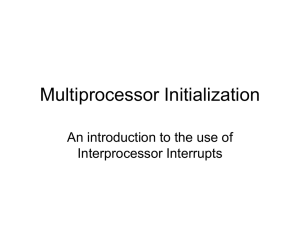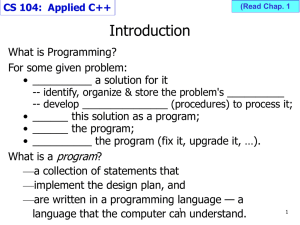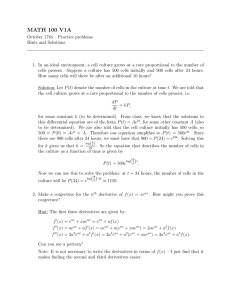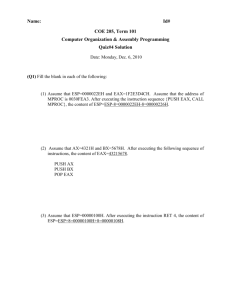addressing modes - NYU Computer Science
advertisement
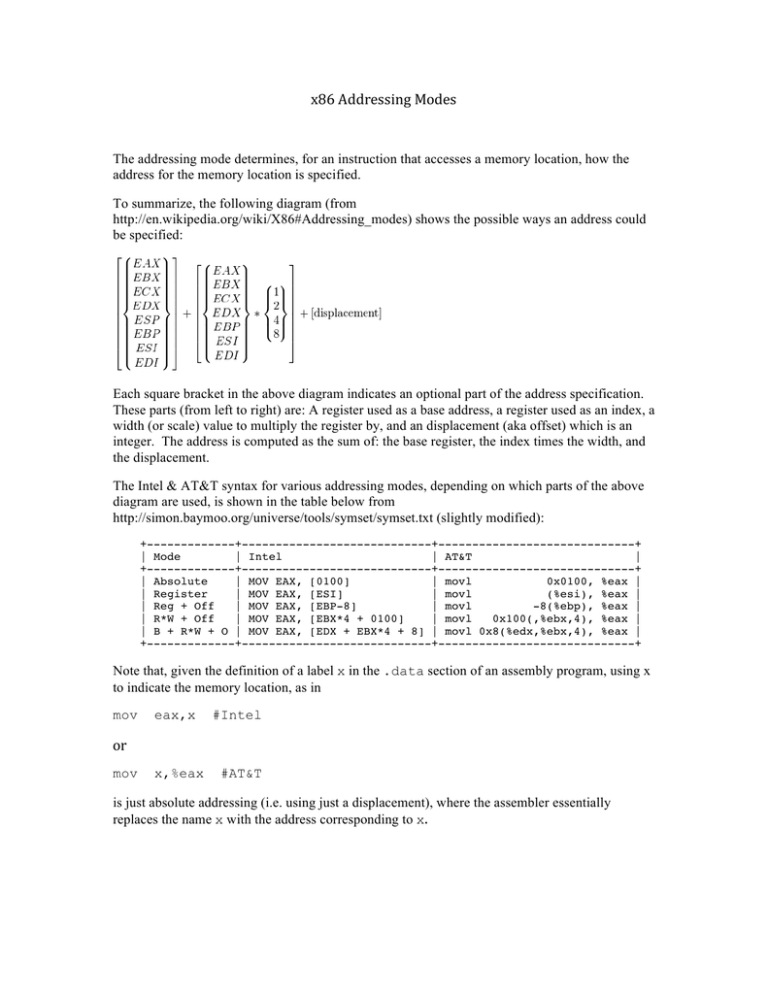
x86 Addressing Modes The addressing mode determines, for an instruction that accesses a memory location, how the address for the memory location is specified. To summarize, the following diagram (from http://en.wikipedia.org/wiki/X86#Addressing_modes) shows the possible ways an address could be specified: Each square bracket in the above diagram indicates an optional part of the address specification. These parts (from left to right) are: A register used as a base address, a register used as an index, a width (or scale) value to multiply the register by, and an displacement (aka offset) which is an integer. The address is computed as the sum of: the base register, the index times the width, and the displacement. The Intel & AT&T syntax for various addressing modes, depending on which parts of the above diagram are used, is shown in the table below from http://simon.baymoo.org/universe/tools/symset/symset.txt (slightly modified): +-------------+----------------------------+-----------------------------+ | Mode | Intel | AT&T | +-------------+----------------------------+-----------------------------+ | Absolute | MOV EAX, [0100] | movl 0x0100, %eax | | Register | MOV EAX, [ESI] | movl (%esi), %eax | | Reg + Off | MOV EAX, [EBP-8] | movl -8(%ebp), %eax | | R*W + Off | MOV EAX, [EBX*4 + 0100] | movl 0x100(,%ebx,4), %eax | | B + R*W + O | MOV EAX, [EDX + EBX*4 + 8] | movl 0x8(%edx,%ebx,4), %eax | +-------------+----------------------------+-----------------------------+ Note that, given the definition of a label x in the .data section of an assembly program, using x to indicate the memory location, as in mov eax,x #Intel or mov x,%eax #AT&T is just absolute addressing (i.e. using just a displacement), where the assembler essentially replaces the name x with the address corresponding to x.
